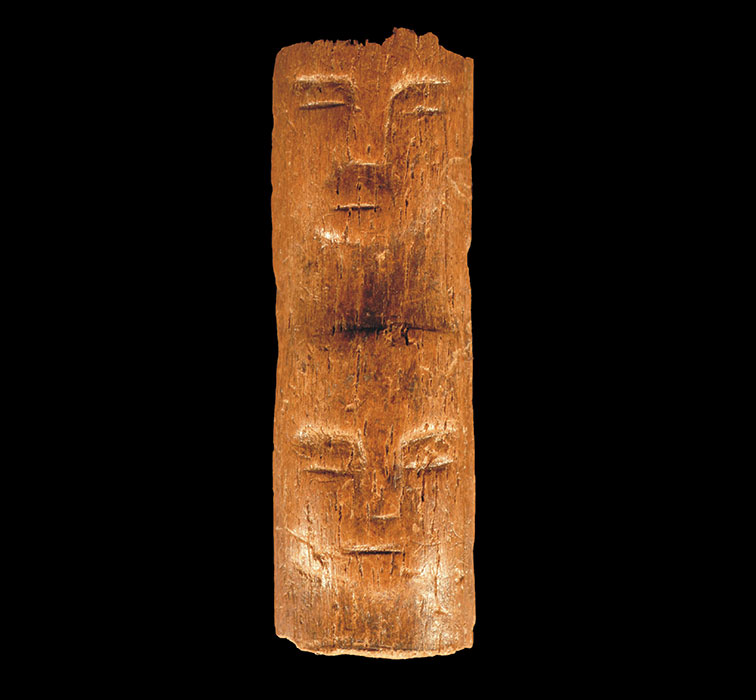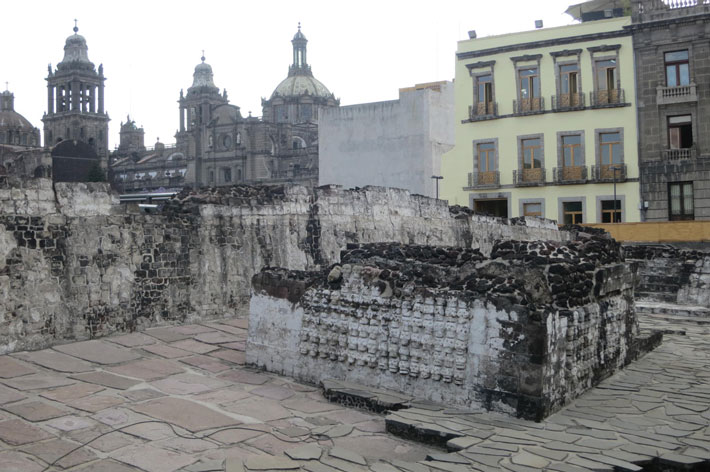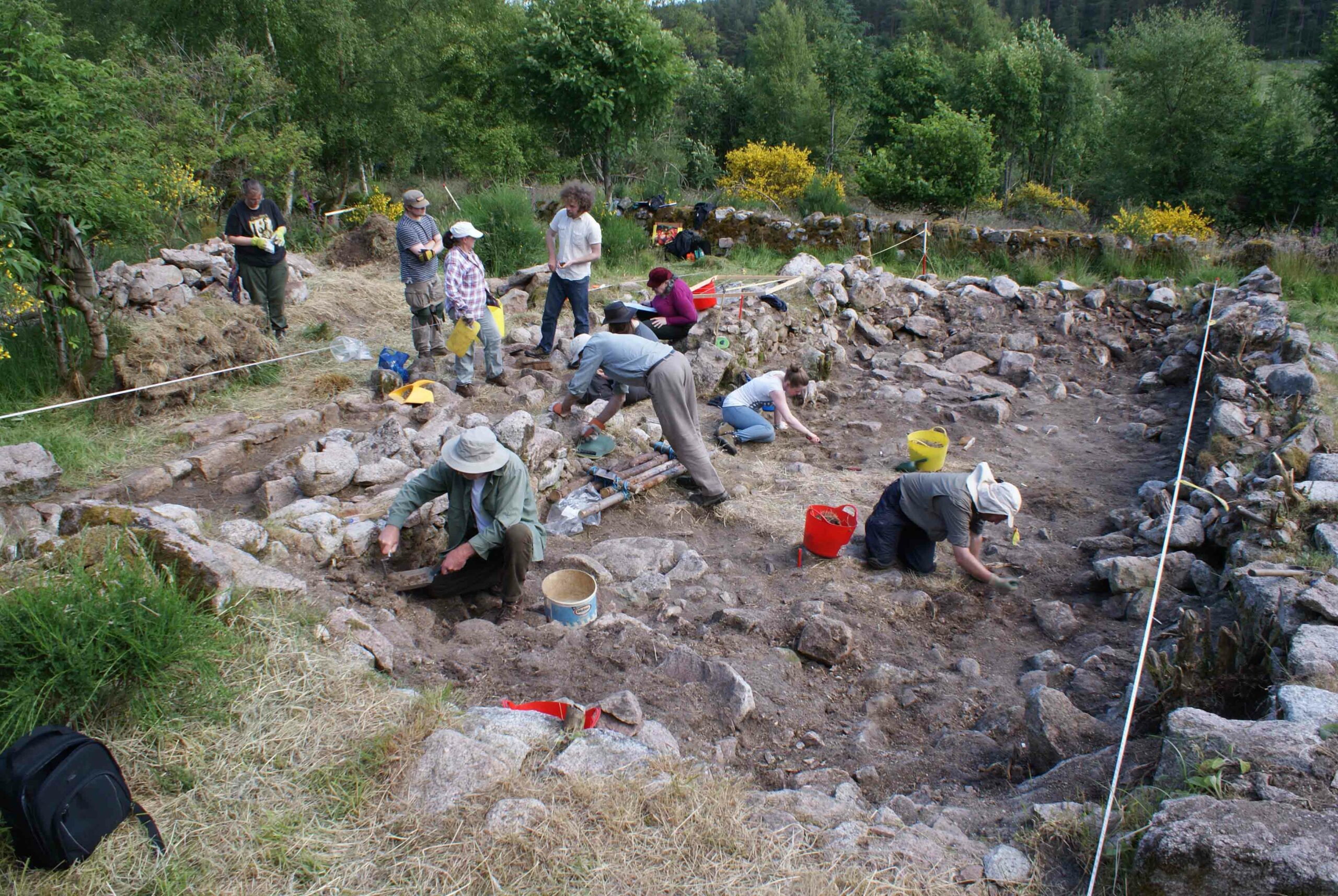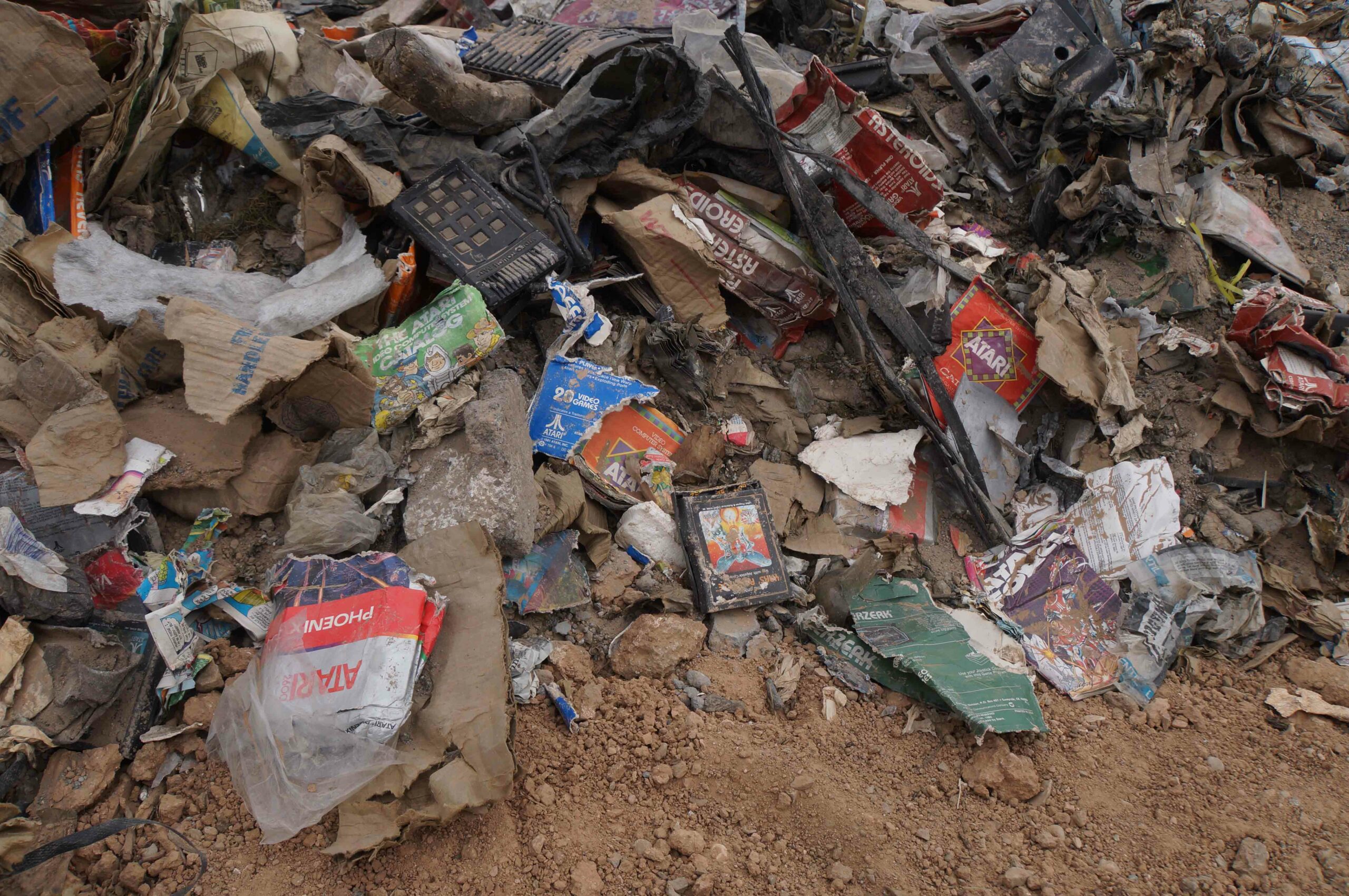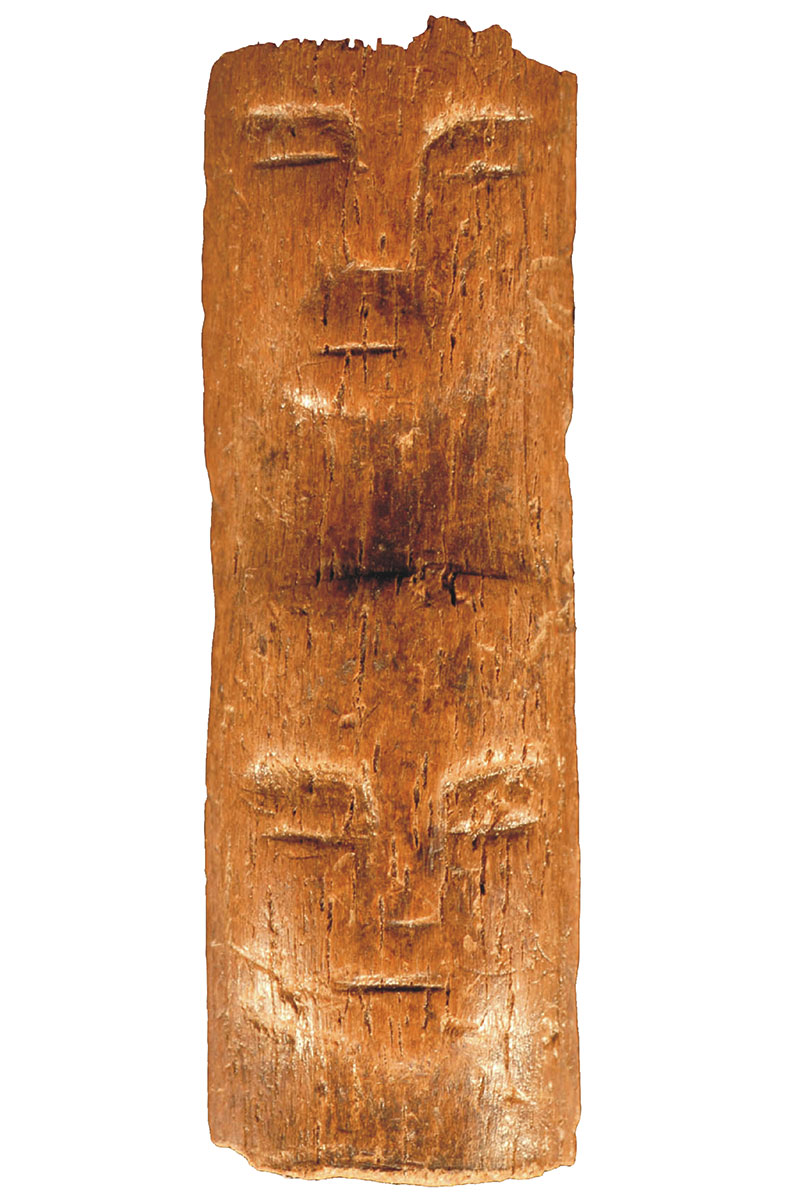
What is it?
Wand
Culture
Pre-pottery Neolithic
Date
Late 9th millennium B.C.
Material
Rib bone, probably from an aurochs
Found
Tell Qarassa, Syria
Dimensions
About 2 inches long
There are moments in history when major cultural shifts occur, and these are often accompanied by dramatic changes in the way artists choose to depict humans. One such moment occurred in the early Neolithic period. At the site of Tell Qarassa, in what is now Syria, archaeologists have found an extraordinary example of artistic expression created at the time when the region’s inhabitants were making the transition from hunter-gatherers to farmers.
The carved bone artifact was found in a grave and has been interpreted as a kind of wand used in funerary rituals. Although there are other examples of carved bone wands, none display human faces. Only two faces remain on this example, but it is clear that the wand was deliberately broken or cut, and that, at one time, there were probably more faces on the bottom.
It is the quality of the faces on the wand, not just their existence, that is revolutionary. According to Tell Qarassa project archaeologists, the artifact is of great significance for the study of the origins and meanings of human representation. Previously, humans were portrayed in a stylized way, but on the wand and other contemporaneous artifacts from the Neolithic Near East, faces start to be portrayed more naturalistically. The artist clearly wanted to focus attention on the closed eyes and mouth, as these are the most deeply engraved features. While no individual person is represented, there is a deliberate attempt to stress facial traits and, according to the archaeologists, concepts of personhood. This represents “a major innovation in the way the first farming communities conceived of the human image and a new way of perceiving human identity,” says archaeologist Juan José Ibañez Estevez.



